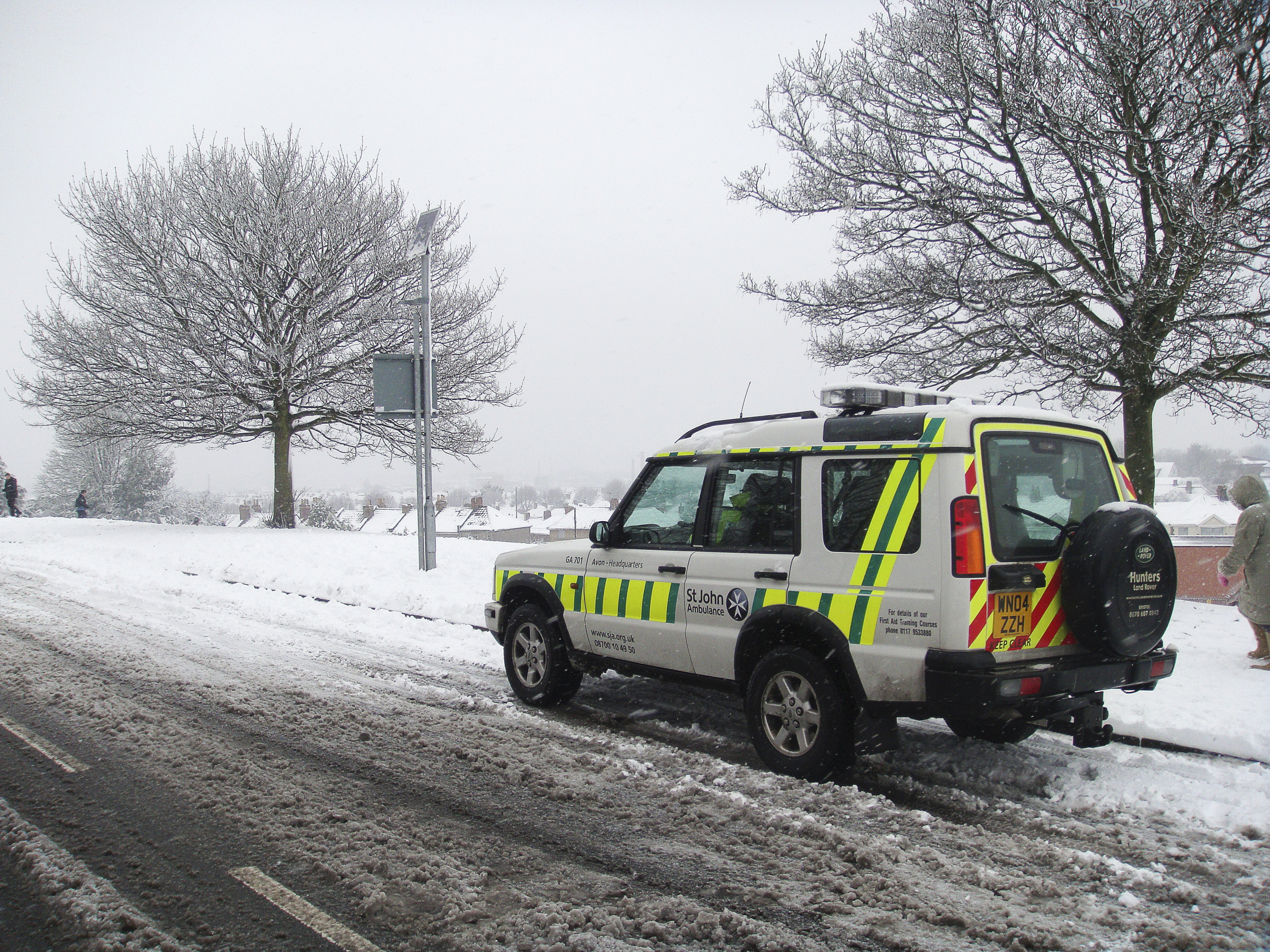Thursday 08 December, 2022: With an amber weather warning issued for sub-zero temperatures, ice and snow this week across much of the country, it’s important to be aware of how a sudden drop in temperature can affect the body.
Key signs someone is getting too cold include:
- Shivering – as the body attempts to warm itself
- Slow, shallow breathing – as the body tries to conserve energy
While severe-cold related illnesses such as hypothermia and frostbite are rare, these types of illnesses may require urgent medical attention and so knowing what to look out for and understanding how to help someone quickly is vital in ensuring they receive the best care and the most positive outcome.
As well as the effect on the body, cold conditions can cause ice and frost which can lead to slips and falls and result in injury. While many incidents can be treated at home, it’s important to know when to seek further medical advice.
St John Ambulance shares first aid advice for cold-related illnesses
Hypothermia: Hypothermia is a condition which can happen when someone’s body temperature drops below 35°C (95°F). Normal body temperature is around 37°C (98. 6°F). Hypothermia can become life-threatening quickly, so it’s important to treat someone with hypothermia straight away. Severe hypothermia, when the body temperature falls below 30°C (86°F), is often fatal. Hypothermia can be caused by being in a cold environment for a long time. The elderly, the very young, the homeless and those who are thin, frail, or not able to move around easily are particularly vulnerable.
Symptoms include:
- Shivering and pale, cold, dry skin
- Tiredness, confusion, and irrational behaviour
- Slow and shallow breathing
- Slow and weakening pulse
How to treat symptoms hypothermia:
- Get them out of the cold. If they can’t be moved indoors protect them from the cold and the elements
- If their clothes are wet, change them and cover them with a blanket. Make sure the head is covered too
- If they are alert give them something warm to drink and some food or chocolate. Call 999/112. Do not leave them alone
- If they become unresponsive, prepare to treat someone who is unresponsive
Frostbite: Frostbite happens when part of the skin and other tissues, freeze due to low temperatures. Frostbite usually affects the fingers and toes as they are the parts of the body furthest from the heart. If someone has severe frostbite, then they might permanently lose all feeling in that part of their body. Frostbite can lead to the blood vessels and soft tissues becoming permanently damaged, leading to death of the tissue and gangrene. Frostbite usually happens in freezing or cold and windy weather. People who cannot move around are more likely to get it. Someone with frostbite will probably have hypothermia, so be prepared to treat them for that too.
Symptoms include:
- ‘Pins and needles’ to begin with
- They may have numbness
- Their skin may become hardened and stiffened
- Their skin may be pale, and then turn blotchy and blue. On recovery, the skin may be red, hot, painful and blistered.
How to treat symptoms of frostbite:
- Help them indoors, if possible, and warm their hands up by placing them under their armpits or in your hands. Don’t rub their skin
- Place the affected part in warm water
- Dry the area and put on a lightweight dressing. Help them raise the limb
- Give them paracetamol
- Take or send them to hospital, keeping the limb raised
How to differentiate between strains/sprains and a fracture:
Icy conditions can sometimes lead to slips and falls. It can be hard to tell the difference between a strain/sprain and a fracture, they all can be painful, tender and swollen. If you are unable to bear weight on the limb, if there is any obvious deformity or you have any doubts about the seriousness of the injury then always seek medical advice.
How to treat a fracture:
Fractures need to go to hospital, but beforehand, you should make sure the injured person is kept still and the break supported with your hands or by being bandaged (in a sling if an upper limb break, or bandaged to the uninjured leg, if a lower limb break).
How to treat a strain/sprain:
- Strains and sprains should be treated initially by the RICE procedure (Rest, Ice, make Comfortable and Elevation)
- Rest - help them to sit and support their injury in a comfortable raised position. Remove jewellery from the limb, if possible
- Ice - apply something cold. Don’t leave it on for more than ten minutes
- Comfortable support - wrap a soft layer of padding around the area. Tie a support bandage around it which goes up as far as the next joint on each side
- Elevation – keep the injury raised on something soft
- If the pain is severe send them to hospital. Otherwise, tell them to rest the injury



